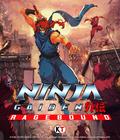The ‘Commanders’ feature in Conflict Zone
Commanders, delegation, multi-site action
The use of commanders is a very innovative feature in RTS games. Their role is to command a part of the player’s army , so that players can focus their attention on global strategy, or deal personally with a particular action without worrying about the rest of their troops.
Principles
Commanders are special units dedicated to delegation; they take a group of units, and possibly a base, and replace the player for every tactical operation involving these troops and buildings (what we call the micro-management). The player interacts with the commanders and their troops by giving strategic orders to the commanders.
A commander reacts as a military officer, with objectives to reach, but also with human reactions. Commanders have a strong personality that makes them seem really human. With time, and accumulation of victories and defeats, commanders learn and progress. They experiment with tactics and strategies, and learn which can be good, and which are bad.
With time, the player will discover their personality, their strong points and their weaknesses, how to maximise their use, and so will get progressively attached to them.
Training
Through campaign, custom solo and Multiplayer games Commanders try to adapt to your own strategies and will eventually reproduce behaviours they think you would have in such situations. For instance if you systemically shoot at tower guns first when attacking, your commander devoted to attack will have a greater propensity to do the same...
Strategic orders
Commanders aren’t standard units; they aren’t physically on the battlefield, and therefore can't die. They are used at a more strategic level.
Strategic orders can be given to commanders directly in the main 3D view, with the commander “specific orders” menu. But the player should mainly command them in the strategic screen (it appears when [tab] is pressed). This screen is a large and detailed sky view of the battlefield, on which all units can be easily distinguished. Troops moves are also represented, which is very convenient for quick analysing of the situation.
All commanders can deal with all kinds of operations, but as they are specialised in one kind of operation, they won’t have the same efficiency with each type of action. Though, with experience, they can learn more or less to deal quite efficiently with other kinds of operations.
Possible strategic orders are:
- Get and release control of a group (choose number of user-defined group)
- Commando operation (destroy a specific building, free hostages, etc)
- Attack enemy group or base
- Defend a base position
- Build a base for defence
- Build a base for attack
- Protect Civilians : ie Collect resources
Feedback
It is very important for the player to know at any time how the situation is evolving. The main 3D view interface, and the tactical screen interface have been especially designed to facilitate feedback and transmission of information from commanders to the player.
There is visual help on the mini-map that shows and highlights important events without giving any detail; the player will then have to check what’s going on. There is also text information displayed in the text area describing events and giving indication of troops health, morale, etc. lastly, commanders have distinct voices, and will ‘talk’ to the player when there’s an emergency that really requires the player’s intervention .
There are more sophisticated feedback systems in the tactical screen.
Multi-site gaming
Modern wars aren’t divided into successive battles or operations that occur in just one place at a time. Peacemakers, which imitates modern warfare will show credible situations where action takes place simultaneously in several locations at a time.
As commanders, especially if they’re well trained, have the ability to handle complex situations, the player can assign troops to them from his army, and let them deal with base defence, assaults, commando operations, etc and let them have complete strategic and tactical freedom.
As commanders constantly learn, the more they are used the more cleverly they handle operations. The player can then trust them without worry and without having to watch their work.
So multi-site gaming becomes a reality, and allows a rich game-play as yet unseen in RTS games.
Commander profiles
As commanders have a very important role to play in the game, and can be used for various kinds of missions in the game, we have decided to specialise them in one kind of mission and to give them a unique personality that corresponds to their speciality.
So there are 4 very distinct commander profiles:
White male commander. Middle-aged, strong, tough, brutal. Specialised in ‘basic’ ground assaults and melee combat. Black male commander. Young, dynamic, clever. Specialised in intelligence and commando operations. Very careful about his men. White female commander. Young and very good looking. Specialised in air combat. Feminine, but authoritarian. White male commander. Old, and smart. Specialised in defence.
Typical missions
Each commander profile corresponds theoretically to a type of mission. The player will have to accomplish complete sets of these missions if he wants to ‘unlock’ the 4 commanders, who will have been trained (automatically) by the player’s play. Typical missions for each commander are:
Ground assault & melee combat: frontal attack of an enemy base, etc Defence Intelligence operations, and commando actions: infiltrate an enemy building, etc Air attacks.









